With mesmerizing picturesque beauty, Sikkim is known to be one of the most prosperous states of North East India for its indigenous culture and heritage.
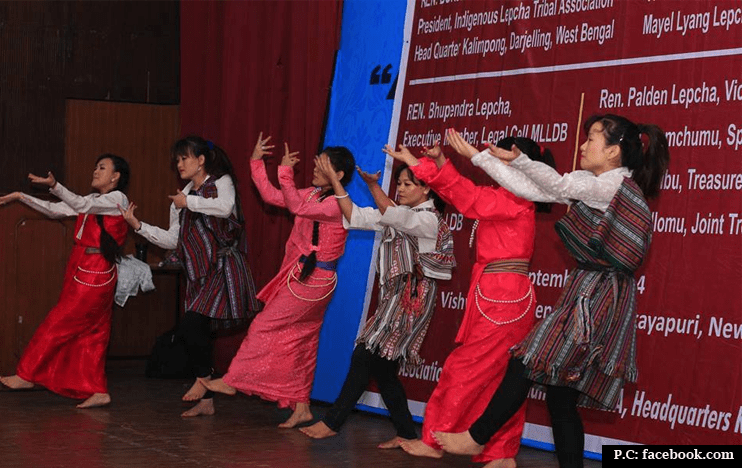 This dance is specifically performed on the 15th day of the 7th month of the Buddhist calendar of North. Lepcha community performed this dance to dedicate the peak of Mount Kanchenjunga along with its companions Mt Narshing, Mt Kabru, and Mt Simbrum. These peaks are believed to contain minerals, medicine, salt, and food grains. And so, their power is celebrated in the form of dance.
This dance is specifically performed on the 15th day of the 7th month of the Buddhist calendar of North. Lepcha community performed this dance to dedicate the peak of Mount Kanchenjunga along with its companions Mt Narshing, Mt Kabru, and Mt Simbrum. These peaks are believed to contain minerals, medicine, salt, and food grains. And so, their power is celebrated in the form of dance.
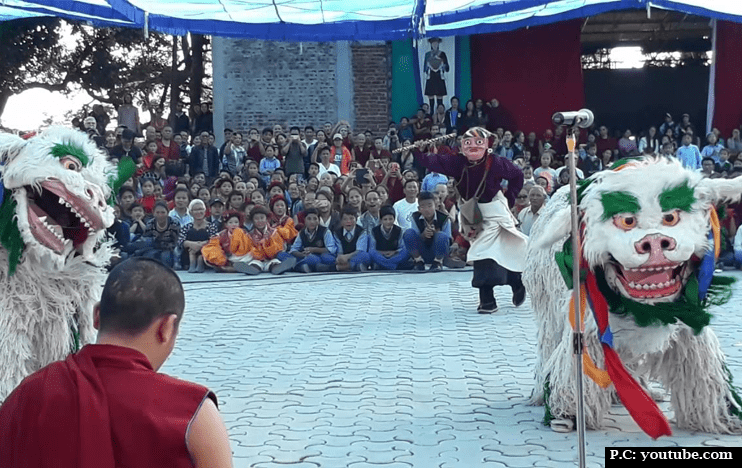 Bhutia community was being herdsmen have a strong affinity towards animals. The Singhi Chaam dance performed in order to show respect towards the mythical snow lion which is only found in the Trans Himalayan region.
Bhutia community was being herdsmen have a strong affinity towards animals. The Singhi Chaam dance performed in order to show respect towards the mythical snow lion which is only found in the Trans Himalayan region.
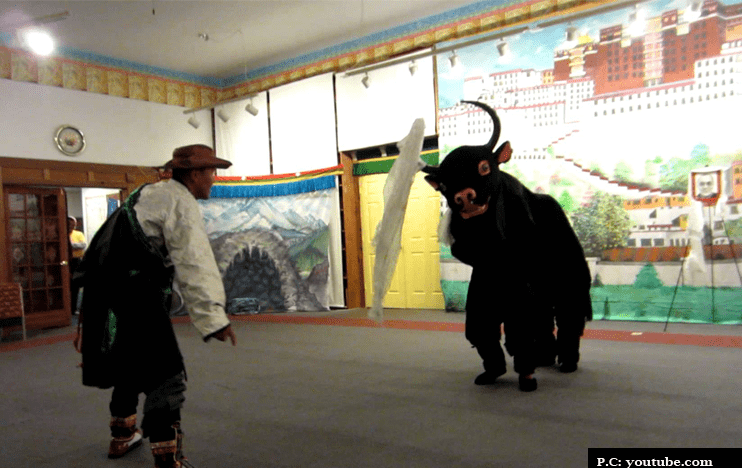 As its name implies, Yak Chaam dance is performed by the Bhutia community to honor the Yak. There are many families which are dependent on the Yak for their survival for using Yakís wools in their daily life. And that is why there is a special dance that celebrates the Yak. This traditional dance depicts the relationship between the herdsman and the Yak.
As its name implies, Yak Chaam dance is performed by the Bhutia community to honor the Yak. There are many families which are dependent on the Yak for their survival for using Yakís wools in their daily life. And that is why there is a special dance that celebrates the Yak. This traditional dance depicts the relationship between the herdsman and the Yak.
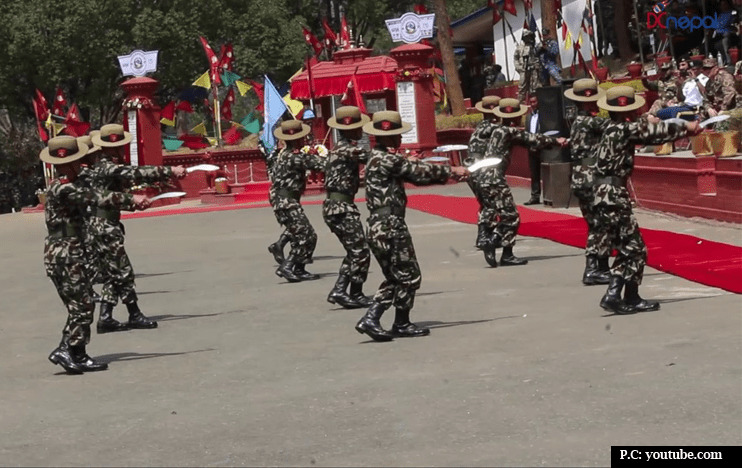 The name Khukuri means bravery in Nepali. This is basically a warrior dance and demonstrates the way soldiers march for the battle. Each dancer carried a Khukuri with them as a signifier of victory.
The name Khukuri means bravery in Nepali. This is basically a warrior dance and demonstrates the way soldiers march for the battle. Each dancer carried a Khukuri with them as a signifier of victory.
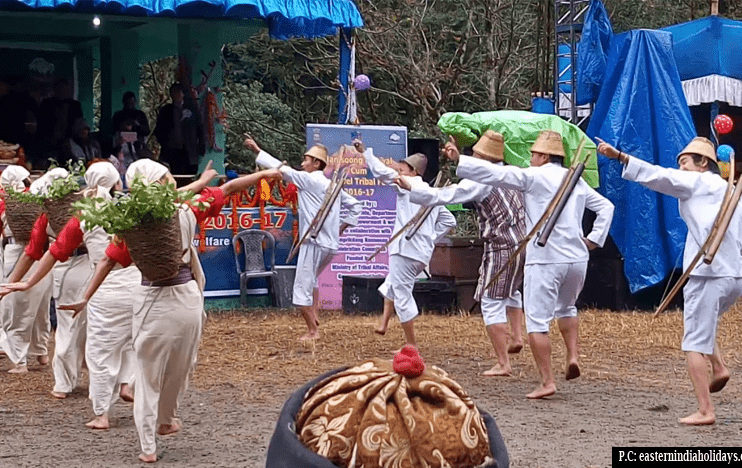 It is one of the most popular folk dances of the Nepalis. This dance is performed by young girls and boys. This dance form is a part of every fair or Mela festivals. The young people wear flowers on their bodies and heads and dance to the beats of many musical instruments.
All the above-mentioned dance forms represent the cultural as well as the traditional life of Sikkim.
It is one of the most popular folk dances of the Nepalis. This dance is performed by young girls and boys. This dance form is a part of every fair or Mela festivals. The young people wear flowers on their bodies and heads and dance to the beats of many musical instruments.
All the above-mentioned dance forms represent the cultural as well as the traditional life of Sikkim.
Sikkim- ĎLand of Cultural Heritageí:
Sikkim has an exquisite culture which is expressed towards any visitors as well as other people in the form of dances. And the cultural heritage of Sikkim is expressed in its traditional folk dances. There is a number of folk dances that are performed in the many monasteries during their annual celebrations. Every dance form has its own specialty and importance which is soothing your eyes and ears. Some of the dances are related to startling the beauty of natural environments. Some of them depict the harvest seasons. So, to know the tradition of Sikkim, you must explore the dances of Sikkim and get soaked in their holy culture.Dance is a medium to showcase rich history and heritage-
The entire population of Sikkim can be broadly divided into three major groups; Bhutias, Nepalis and Lepchas which have their own distinct language, cultural programs, and dance forms. Folk dances of Sikkim go together with the tunes of many musical instruments. Here is a list about the types of folk dances Sikkim that you cannot afford to miss-1. Folk Dances of the Lepchas:
There are a variety of folk dances performed by Lepchas--
Chu Faat Dance-
 This dance is specifically performed on the 15th day of the 7th month of the Buddhist calendar of North. Lepcha community performed this dance to dedicate the peak of Mount Kanchenjunga along with its companions Mt Narshing, Mt Kabru, and Mt Simbrum. These peaks are believed to contain minerals, medicine, salt, and food grains. And so, their power is celebrated in the form of dance.
This dance is specifically performed on the 15th day of the 7th month of the Buddhist calendar of North. Lepcha community performed this dance to dedicate the peak of Mount Kanchenjunga along with its companions Mt Narshing, Mt Kabru, and Mt Simbrum. These peaks are believed to contain minerals, medicine, salt, and food grains. And so, their power is celebrated in the form of dance.
-
Sikmari Dance-
2. Folk Dances of the Bhutias:
Bhutias folk dances are included--
Singhi Chaam Dance-
 Bhutia community was being herdsmen have a strong affinity towards animals. The Singhi Chaam dance performed in order to show respect towards the mythical snow lion which is only found in the Trans Himalayan region.
Bhutia community was being herdsmen have a strong affinity towards animals. The Singhi Chaam dance performed in order to show respect towards the mythical snow lion which is only found in the Trans Himalayan region.
- Costumes of Dancers- Snowy White Lion Costumes
- The theme of Dance- Mock fights to show the power and strength of the mythical beast.
-
Yak Chaam Dance-
 As its name implies, Yak Chaam dance is performed by the Bhutia community to honor the Yak. There are many families which are dependent on the Yak for their survival for using Yakís wools in their daily life. And that is why there is a special dance that celebrates the Yak. This traditional dance depicts the relationship between the herdsman and the Yak.
As its name implies, Yak Chaam dance is performed by the Bhutia community to honor the Yak. There are many families which are dependent on the Yak for their survival for using Yakís wools in their daily life. And that is why there is a special dance that celebrates the Yak. This traditional dance depicts the relationship between the herdsman and the Yak.
- Costumes of Dancers- Yak shaped costumes.
- The theme of Dance- Mock fights, war dances, and even performed love scenes of Yaks.
-
Denzong Gnenha Dance-
-
Tashi Yangku Dance-
3. Folk Dances of the Nepalis:
Nepalis folk dance forms are different types, which are described below--
Khukuri Naach-
 The name Khukuri means bravery in Nepali. This is basically a warrior dance and demonstrates the way soldiers march for the battle. Each dancer carried a Khukuri with them as a signifier of victory.
The name Khukuri means bravery in Nepali. This is basically a warrior dance and demonstrates the way soldiers march for the battle. Each dancer carried a Khukuri with them as a signifier of victory.
-
Maruni Dance-
- Costumes of Dancers- Dhatu Waray or a funny clown dress.
- Instruments- A grand 9 instrument orchestra, known as Naumati Baja.
-
Chutkey Naach-
 It is one of the most popular folk dances of the Nepalis. This dance is performed by young girls and boys. This dance form is a part of every fair or Mela festivals. The young people wear flowers on their bodies and heads and dance to the beats of many musical instruments.
All the above-mentioned dance forms represent the cultural as well as the traditional life of Sikkim.
It is one of the most popular folk dances of the Nepalis. This dance is performed by young girls and boys. This dance form is a part of every fair or Mela festivals. The young people wear flowers on their bodies and heads and dance to the beats of many musical instruments.
All the above-mentioned dance forms represent the cultural as well as the traditional life of Sikkim.
When in Sikkim, here are the best places that you could stay inÖ
Accommodation is the prime factor which comes to your mind whenever you are planning a holiday trip to any places. And if you want to visualize all the above-mentioned folk dances, you have to stay in Sikkim. But it is better to halt in the hotels in Gangtok, Sikkim for an overnight stay before starting your trip to exploring Sikkimís folk dances. Among them,Gangtok isbest place to stay in Sikkimwhich serves as the hub of many luxurious hotels like Delight Sernya, Hotel Sonam Delek, Delight Hotels The Fortuna etc.Indulge in Sikkimís culture & heritage through Dance-
Festivals increase diversity and make cities better places to live. Festivals promote creativity, offer opportunities for civic pride, and they improve our general psychological well-being. So, donít limit yourself only by visiting the alluring places in Sikkim, in fact, you should get soaked in the beauty of Sikkimís culture by exploring folk dances.Comments (0)




